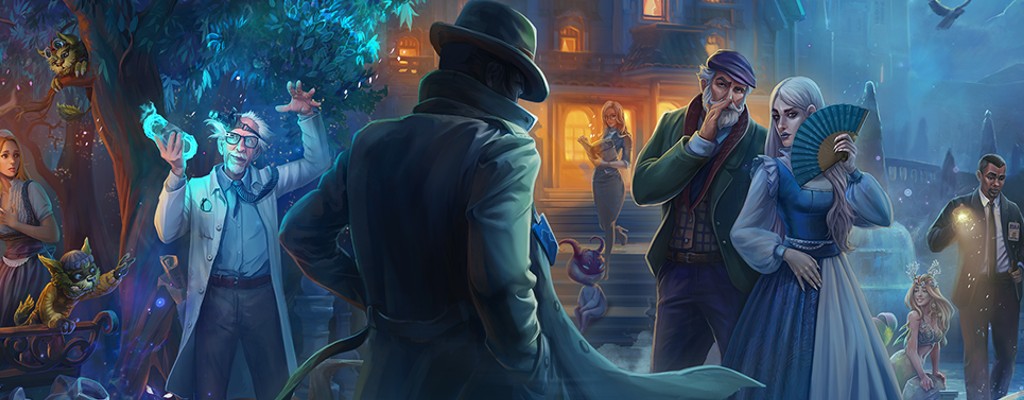
How can storytelling enhance a hidden object game?
Hidden object games are truly appealing but, the ones with storytelling are even better which is why we’ll be discussing how and why storytelling can enhance a hidden object game.
Hidden object games are those delightful gems that have captivated players for years. Whether you're scouring a dusty antique shop for a missing locket or combing a pirate ship for a hidden treasure map, these games offer a satisfying blend of challenge and discovery. But what truly elevates a hidden object game from a casual pastime to an immersive experience? The answer lies in the power of storytelling and we’ll be discussing why storytelling is really important and how it makes even an ordinary hidden objects game a good one.
Setting the Pace and Igniting Curiosity
A well-crafted story sets the pace for your hidden object adventure. Imagine this: you're not just hunting for random objects in a cluttered scene. You're a detective investigating a mysterious mansion, where each hidden clue unlocks another piece of the puzzle. The story gives context to the objects you seek, transforming them from mundane items into vital pieces of evidence. Speaking of detectives and mysteries, Criminal Case is a sublime hidden objects game that offers a well-rounded experience with an intriguing story and perfect gameplay.
This narrative creates a sense of purpose, propelling you forward. Every hidden object you find becomes a mini-victory, bringing you closer to solving the case. Think about it – wouldn't you be more invested in finding a missing amulet if it held the key to breaking an ancient curse?
A Marriage of Theme and Visuals
Storytelling isn't just about words on a screen; it breathes life into the game's visuals. The theme, established by the story, dictates the environment you explore. Are you searching for a hidden recipe in a bustling Parisian bakery, sunlight filtering through flour-dusted windows? Or are you venturing into a shadowy crypt, each object illuminated by your flickering torch?
The story and visuals work hand-in-hand. A haunted mansion scene wouldn't feel complete without cobweb-draped furniture and flickering candles. This immersive atmosphere enhances the gameplay, making you feel like you've truly stepped into the world of the story. Speaking of visuals, Little Shop Of Treasures is one of those games that truly makes it worth your while with the perfect demonstration of visuals.
Fueling the Social Flame
Hidden object games with strong narratives become more than solitary experiences. The compelling story becomes a conversation starter. Have you ever finished a particularly thrilling chapter and immediately called a friend to discuss the latest twist? A captivating story fosters a sense of community among players, encouraging them to share theories, discoveries, and frustrations.
This social aspect adds a whole new layer of enjoyment. Suddenly, you're not just playing a game; you're embarking on a shared adventure with your friends, fueled by the game's narrative.
Beyond the Basics: Building Emotional Connection
But storytelling's power goes beyond setting the pace and fostering social connection. A strong narrative can build an emotional connection with the player. Imagine a story where you're not just searching for objects; you're searching for a lost loved one. Suddenly, finding a worn teddy bear or a faded photograph takes on a whole new meaning. The objects become more than just items to click on; they become emotional anchors, deepening your investment in the story.
Storytelling can also introduce relatable characters. Maybe you play as a plucky journalist or a wise detective. By giving these characters quirks, flaws, and motivations, players can connect with them on a personal level. This emotional connection further enhances the gameplay experience.
So next time you delve into a hidden object game, pay attention to the story. It's not just filler; it's the glue that holds the entire experience together.
Related Articles

Hidden Object Games for Classrooms: How Teachers Can Use Them for Learning
Such games help learners develop concentration, vocabulary, and cooperation by using an online hidden object game. Teachers should plan imaginative lessons and let students have fun learning in different subjects: English, maths, and even science.

Why Time Limits in Hidden Object Games Can Make or Break the Experience
The objective of most hidden object games is to immerse the player in alternate realities and serve as a temporary escape or relief from the stresses of everyday life. However, the option to use time pressure and obstacles as challenges in the game can take the experience in a totally different direction. Let's take a look.

How Hidden Object Games Use Visual Clutter to Trick the Brain
Understanding many design choices behind hidden object games and how these add new layers of play for hidden object game searchers.

Reddit’s Best Hidden Object Game Threads You Should Check Out
Sometimes, the gems are actually hidden and we’ve scoured the web to bring you Reddit’s best hidden object game threads.